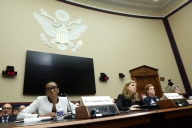You have /5 articles left.
Sign up for a free account or log in.
In the last year or two, many challenges have been made to lower the cost of earning a degree, create differential pricing based on major, or allow individual professors to set the cost of their on-line courses. A high quality blend of liberal arts and professional training will never compete with pressures for new, low-cost options if price alone is considered. When playing the game Let’s Make a Deal, many excellent institutions will lose out to these economic pressures unless they respond with much more than good economic arguments.
When I talk to friends who have children about to enter college, I hear the impact that the cost of higher education is having on even the wealthy and well-educated in this country. A couple who have Ivy League educations, a joint income that puts them in the top 2 percent of the country, and surely must understand the value of a quality education ask me, “Why does college cost so much?” My surprise turns to shock when an acquaintance (thankfully, not a friend) explains to me that, because he owns his business, he can hide his income. He would like me to tell him how institutions handle financial aid so he can “game the system.” These consumers of higher education are like contestants trying to get the best deal possible from Monty Hall, the iconic host of the TV game show Let’s Make a Deal.
The cost of college has always influenced decisions about where to attend college, but as I observed in an earlier post, a college degree has become a commodity and many families are failing to make distinctions regarding the “quality” of the college experience.
The response by some politicians and administrators also seems to focus on cost rather than quality as they explore low-cost degrees and new cost structures, for example:
- During the Republican battle for the presidential nomination, Governor Rick Perry of Texas made headlines by challenging institutions of higher education to leverage Web-based instruction and implement efficiency measures to produce bachelor’s degrees that cost no more than $10,000.
- Some institutions, including many community colleges, are developing differential tuition plans that charge more for high-cost courses and academic programs, like engineering and health sciences.
- In what may be a counter-intuitive move, Governor Rick Scott of Florida has proposed that tuition be frozen for three years for majors in “strategic areas,” which would vary depending on supply and demand.
- Finally, let’s not forget the rush to promote the role of technology in lowering the cost of a degree. We are all trying to find the right place for MOOCs within our institutional structures, yet there is no financial model in place that suggests how MOOCs will provide income and support efficiencies. StraighterLine, a company that charges for mid-sized, online, closed courses (MOCCs), has set up a system that allows individual professors to set their own price, office hours and class size for each of their courses.
While this push for efficiency and differential pricing appears to be a good deal for the individual consumer, it will undermine the quality of higher education. We need to make the case for the value and quality of what we provide. We can demonstrate the long-term value of an undergraduate degree in terms of life-time income, but many students and their parents will take the shorter-term view, especially given the need to pay back student loans beginning the day they earn that degree.
In a recent essay in Inside Higher Ed, Johann Neem notes that: “…we continue to argue that the liberal arts should be defended for their economic value. Such defenses of the liberal arts may turn out to be their true downfall, because they leave us with no language to make clear what the liberal arts are worth.”
I think the economic argument for the value of a degree will continue to be important, but I also support Neem’s point that we need to do more to make the case for the value and quality of a degree. From a practical perspective, a quality undergraduate degree in the liberal arts and/or pre-professional subject matter cannot compete on price with Rick Perry’s challenge to produce a $10,000 degree, or with discounts for specific majors based on supply and demand, or with on-line alternatives that allow a freelance professor to set his or her own price.
There are good philosophical arguments for the value of the liberal arts. Neem summarizes what many argue: “….the liberal arts serve human and civic purposes and are therefore designed for people with the leisure to study them….we must democratize leisure by offering undergraduate college students the time and opportunity to study the liberal arts.” I agree, but civic purpose and democracy won’t pay off those student loans. We should respond on three fronts: (1) begin with the case for the value of a quality undergraduate education; (2) work also to be as cost-effective as we can be; and, (3) keep as a priority pricing structures that provide access to economically disadvantaged students.
While we are diligently working on all three of these fronts, there is a fourth area where we I believe we are lagging – assessment. In order to effectively make the case for a quality undergraduate education, we have to demonstrate what we mean by quality. In future posts, I will examine how our efforts to measure what we do are critical to the argument for the value of a quality education.
William H. Weitzer is currently a Senior Fellow at the Spencer Foundation. After completing his Ph.D. in Environmental Psychology, he has served for thirty years in administrative positions at the University of Massachusetts-Amherst, Wesleyan University, and Fairfield University.





